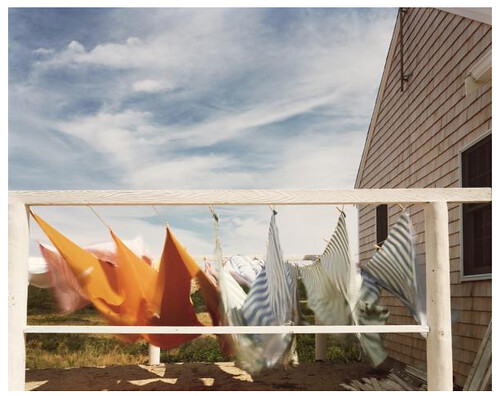With in this series John Pfahl shoots through a series of windows, often with picturesque or at least distinctive views. In his artist's statement, he mentions the idea that his view point is controlled by the vision of some one else, the architect, the decorator, the landscaper, etc. I think it is this idea that draws me to the series more then anything. The project is a lot like a school assignment; he is given a preset frame and scene but then it is up to him to make the subtle movements that bring together a composition. In this case, the centered cars and building are the major compositional element while angled lines of the pavement, and the perspective on the building play minor directional roles. More then anything, the richness of the texture and grit in the color is what really brings this image to life. The browns in the pavement and blues in sky as well as the yellow light bulbs really create a beautiful atmosphere.
In this image, the window almost turns the photograph into a strange sort of triptych. the careful placement of the window panes flattens background into what could easily be another photograph. To prevent this from totally flattening the image Pfahl includes a table and book in the foreground. Though the book cover is not perfectly clear, the colors and formation on it seem to reflect what is just outside the window. Though it may be a tint on the window, the center pane appears much lighter then the outer two. Although this does allow for more detail in the trees and land below the rays of the sun, it mutes the right yellow and blue that show up in the other two windows as well as the book.
This window is different from his others in that the surface is more the subject then what is beyond. The broken glass and wire mesh give the air of an abandoned city building. This in combination with the angular form that is beyond the window makes me fairly certain that it is in a city. When composing this, Pfahl was carful in his placement of both the vertical and horizontal elements of the picture. Rather then shooting the window just perfectly dead on, he moved to make sure that the vertical edge of the building lines up with the thick vertical window pane. Horizontally, he divided the back ground into three parts. The sky takes up one row of frames, the grey part of the building takes up two, and the darker section covers the remaining two.
large/04collegewaymtvernon.jpg)
large/15balancedrockdrive.jpg)
large/15souhparkbuffalo.jpg)


